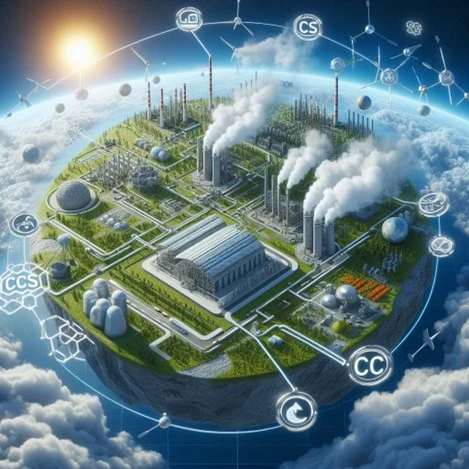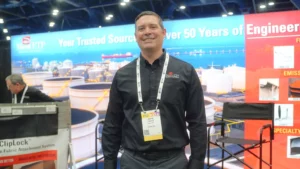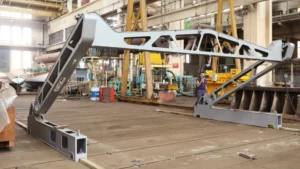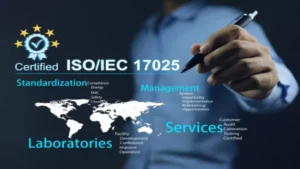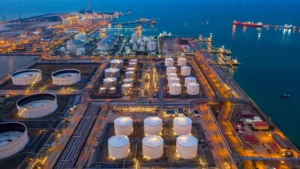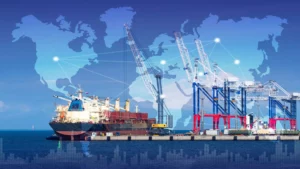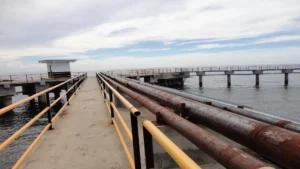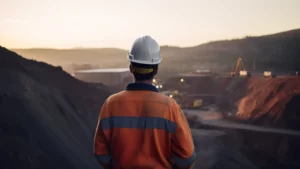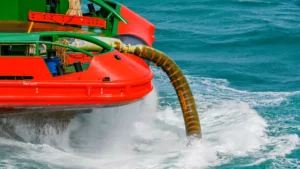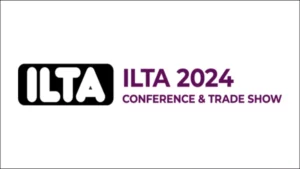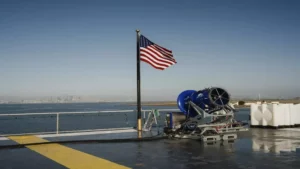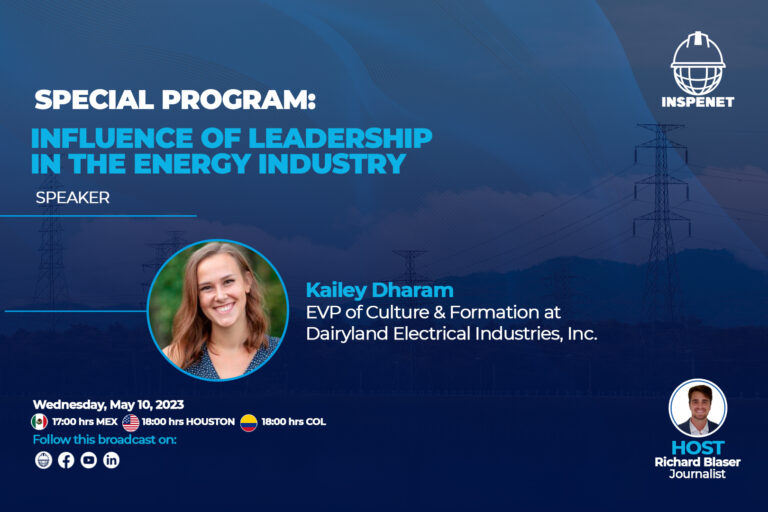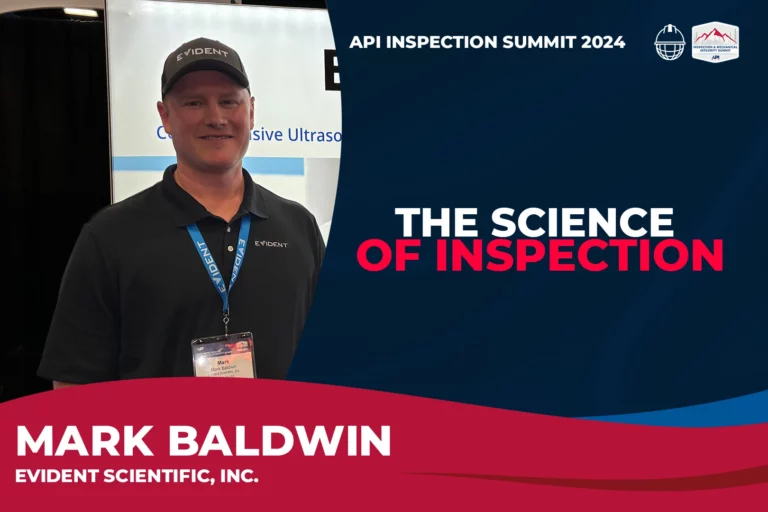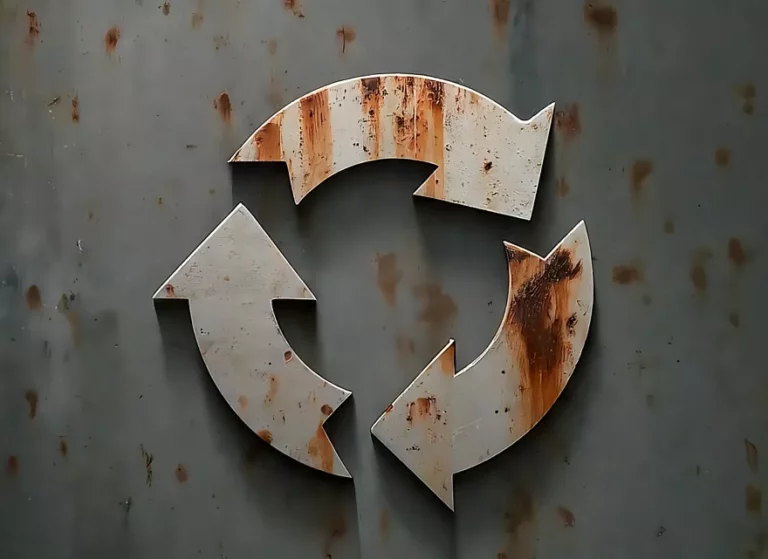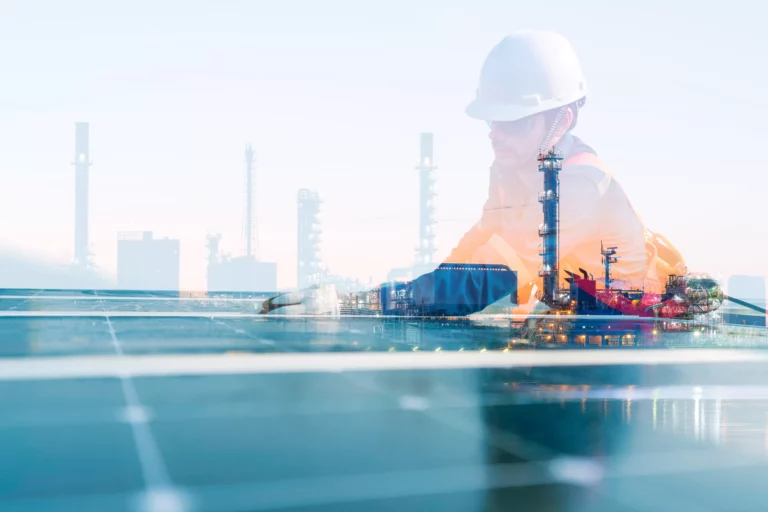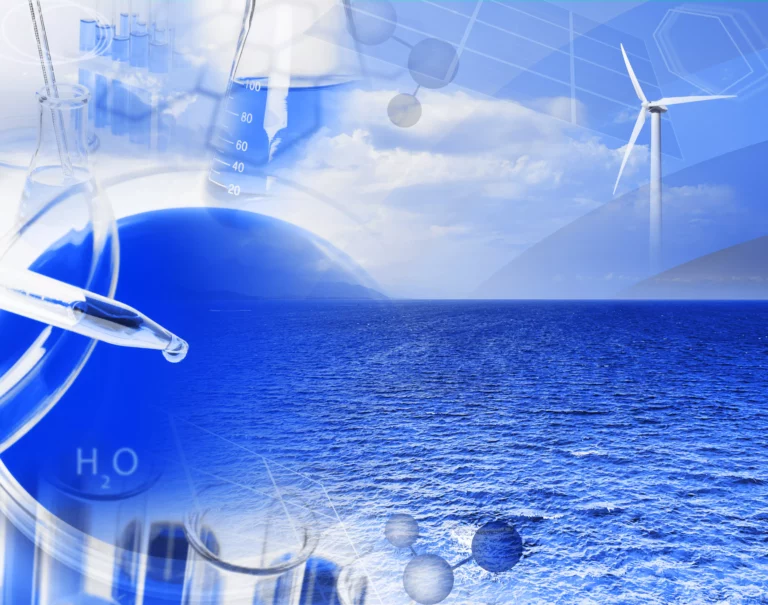Introduction
At the forefront of pipeline engineering, the inspection and mechanical integrity of CO2 and hydrogen transport lines represent a critical challenge and a fascinating opportunity for sector professionals. This article delves into the complex world of managing the integrity of these pipeline systems, whose importance has been magnified in the context of a global economy increasingly leaning towards sustainability and carbon footprint reduction.
Providing a comprehensive and up-to-date view of methodologies, technologies, and best practices in the inspection and maintenance of pipelines specifically designed for CO2 and hydrogen transport is essential. Our focus is on unraveling the unique challenges these gases present, from CO2-induced corrosion to structural integrity issues posed by hydrogen.
The safe and efficient transport of CO2 and hydrogen is a fundamental pillar in the transition to cleaner energy sources. With CO2 emerging as a key vector in carbon capture and storage (CCS), and hydrogen establishing itself as a promising energy carrier, the pipelines transporting them are not just critical infrastructures but also fields of technological innovation. The inspection and maintenance of these pipelines pose unprecedented challenges. CO2, especially when transported in supercritical states, can cause accelerated corrosion phenomena, while hydrogen, with its small molecular size and high reactivity, poses risks of hydrogen embrittlement and permeation through pipeline materials. Furthermore, CO2 and hydrogen mixtures can exhibit synergistic behaviors that demand deep understanding and meticulous management.
This article aims not only to address these challenges from a technical perspective but also to offer a comprehensive view of how inspection and maintenance practices can evolve to ensure the safety, efficiency, and reliability of these vital transport systems. We will delve into a detailed analysis of inspection techniques, from conventional methods to innovative solutions based on artificial intelligence and data analysis, establishing a dialogue between theory and practice that will be essential for sector professionals.
Fundamentals of CO2 and Hydrogen Pipelines
CO2 and hydrogen pipelines represent a significant technical advancement in energy transport infrastructure, differing notably from traditional oil and gas pipelines in several fundamental aspects.
Materials Used: CO2 pipelines typically employ carbon steels with special coatings to prevent corrosion, a primary concern given the potentially corrosive nature of CO2, especially when water is present. In the case of hydrogen pipelines, the material must be carefully selected to avoid hydrogen embrittlement. This often involves the use of low-alloy steels with specific heat treatments that increase their resistance to this phenomenon.
Design and Operational Features: The design of these pipelines must consider the high pressure and temperatures that can vary depending on the state of the gas, such as when CO2 is transported in a supercritical state. This supercritical CO2 presents unique challenges due to its density and fluid properties, requiring specialized handling and materials to ensure pipeline integrity. Valve systems, seals, and joints are also critical, especially in hydrogen pipelines, due to their small molecular size, which can lead to leakage issues if not properly managed. Additionally, leak detection and monitoring systems are more sophisticated, given the colorless and odorless nature of these gases
Key Differences against Conventional Pipelines: Oil and natural gas pipelines generally transport products in states more tolerant from a corrosion and structural integrity standpoint. Oil pipelines, for example, do not face challenges like hydrogen embrittlement. Moreover, gases like methane in natural gas pipelines are less reactive and corrosive compared to CO2 and hydrogen.
In terms of design, oil and natural gas pipelines are usually less complex. They do not require the same special considerations for corrosion prevention or embrittlement as CO2 and hydrogen pipelines. Additionally, detection and monitoring systems in oil and natural gas pipelines are less demanding compared to those required to detect hydrogen leaks, which can be more challenging due to the small molecules and high diffusivity of the gas.
In summary, CO2 and hydrogen pipelines are not only crucial for advancing towards a cleaner and more sustainable energy infrastructure but also represent a challenge and opportunity in the field of materials engineering and pipeline design. These differences underscore the need for specialized approaches and innovative solutions to ensure their safe and efficient operation.
Importance of Inspection and Mechanical Integrity
The inspection and mechanical integrity of CO2 and hydrogen pipelines are fundamental not only for the safe operability of these critical infrastructures but also for their long-term efficiency and reliability. These aspects are crucial given the volatile and potentially hazardous nature of the materials transported.
- Operational Safety: Accident and Leak Prevention: Regular and thorough inspection is vital to proactively identify and address any signs of wear, corrosion, or structural damage that could compromise the integrity of the pipeline. In the case of CO2 pipelines, this includes detecting CO2-induced corrosion, especially in the presence of water. For hydrogen pipelines, it is crucial to detect any signs of hydrogen embrittlement or sealing issues that could lead to leaks. Inspections utilize advanced technologies such as ultrasonography, radiography, and smart sensors that can detect anomalies not visible to the naked eye. These technologies allow a detailed assessment of the pipeline’s condition, helping to prevent catastrophic failures that could result in environmental spills or even human disasters.
- Efficiency and Reliability: Impact on Performance and Lifespan: Proper inspection and maintenance not only ensure safety but also optimize the operational efficiency of the pipeline. A well-maintained pipeline minimizes pressure losses and ensures a steady and efficient flow of gas, which is critical for maintaining energy and operational efficiency. Furthermore, mechanical integrity prolongs the pipeline’s lifespan. By identifying and addressing minor issues before they escalate into major problems, costly repairs and prolonged service interruptions are avoided. This has not only economic implications but also contributes to operational sustainability, as resources are used more efficiently and the need to replace infrastructure is reduced.
Inspection Methods
In the realm of CO2 and hydrogen pipelines, inspection plays a crucial role in ensuring safety and operational efficiency. Inspection methods range from visual and manual techniques to advanced instrumental approaches, complemented by risk-based inspection strategies.
Visual and manual inspection is the cornerstone in assessing a pipeline’s integrity. This technique involves direct observation of the pipeline’s external components, including valves, joints, and connections. Inspectors look for clear signs of wear, corrosion, mechanical damage, or leaks. To complement visual inspection, tools like calipers and thickness gauges are used to measure wear or reduction in the pipeline wall thickness. Despite its simplicity, this inspection is vital for identifying issues that require more detailed attention.
As for instrumental inspection, advanced technologies are used for a more in-depth evaluation. The use of ultrasonics is common, utilizing high-frequency sound waves to detect both internal and external defects in the pipeline materials. This technique is particularly useful for identifying cracks or areas where the pipe wall has thinned. Radiography, on the other hand, uses ionizing radiation to create detailed images of the pipeline’s interior, effective for examining welds and connections for internal imperfections. Additionally, smart sensors play a crucial role in the continuous monitoring of operational parameters like pressure, temperature, and flow, identifying anomalies that could indicate leaks or changes in structural integrity.
Risk-Based Inspection (RBI) represents a systematic and strategic approach. Through risk assessment, which considers factors such as the pipeline’s age, maintenance history, and operational conditions, high-risk areas are identified. This assessment allows for the development of an inspection plan that allocates resources effectively, focusing on the most critical areas. RBI ensures that inspection and maintenance efforts are concentrated on the areas that need them most, optimizing resources and improving the overall safety of the pipeline system.
Together, these inspection methods offer a comprehensive and multifaceted approach to managing the integrity of CO2 and hydrogen pipelines. This combination of techniques is essential to address the unique challenges of these systems, ensuring their safe and efficient operation in today’s complex energy landscape.
Maintenance and Assurance of Mechanical Integrity
Maintenance Programs:
The maintenance of CO2 and hydrogen pipelines is a critical aspect of ensuring their long-term functionality and safety. Maintenance strategies can be broadly categorized into preventive and corrective maintenance.
- Preventive Maintenance: This proactive approach involves regular inspections, routine cleaning, and scheduled repairs. The objective is to identify and address potential issues before they escalate into major problems. Preventive maintenance activities include regular checks for corrosion, wear and tear, and mechanical integrity of pipeline components such as valves, seals, and joints. This approach often relies on historical data and operational metrics to predict when maintenance should be performed.
- Corrective Maintenance: This reactive approach deals with repairs and maintenance activities after a fault or failure has occurred. Corrective maintenance is essential for addressing unforeseen issues that arise during pipeline operation. This includes repairing leaks, replacing damaged sections of the pipeline, and resolving issues identified during inspections. The goal is to restore the pipeline to its optimal operating condition as quickly and safely as possible.
Integrity Monitoring:
Monitoring the integrity of CO2 and hydrogen pipelines is crucial for ensuring their safe and efficient operation. Modern integrity monitoring systems employ a variety of techniques and technologies to provide real-time data and analysis.
- Real-Time Monitoring Systems: These systems continuously monitor various parameters of the pipeline, such as pressure, temperature, flow rate, and chemical composition of the transported gases. Sensors placed along the pipeline relay data to a central monitoring system. This allows for the immediate detection of anomalies that could indicate potential issues, such as leaks or pressure drops.
- Data Analysis: The data collected by monitoring systems is analyzed using advanced software tools. This analysis can identify trends and patterns that may indicate developing problems. Predictive analytics and machine learning algorithms are increasingly being used to analyze this data, providing insights that can inform maintenance decisions and predict potential failures before they occur.
- Integration with Maintenance Programs: The information gathered through integrity monitoring is integral to both preventive and corrective maintenance programs. It helps in scheduling preventive maintenance activities more effectively and in rapidly addressing issues identified through real-time monitoring, thereby enhancing the overall safety and reliability of the pipeline infrastructure.
Regulations and Standards
The field of CO2 and hydrogen pipelines is rigorously regulated by both international and national norms, and it is governed by a series of industrial standards established to ensure the safety, efficiency, and sustainability of these critical infrastructures.
International and National Regulations
International and national regulations play a crucial role in defining the design, construction, operation, and maintenance parameters of CO2 and hydrogen pipelines. At the international level, organizations such as the International Organization for Standardization (ISO) and the International Electrotechnical Commission (IEC) set guidelines that influence global practices. These regulations address aspects such as operational safety, leak prevention, and environmental protection.
At the national level, countries implement their own regulations that often build on international standards but also consider specific local factors such as geography, climate, and socioeconomic conditions. For example, in the United States, the Pipeline and Hazardous Materials Safety Administration (PHMSA) establishes standards for the safe operation of pipelines, while in Europe, the Agency for the Cooperation of Energy Regulators (ACER) plays a similar role.
Industry Standards
Industry standards are fundamental in establishing uniform and reliable practices in the design and operation of pipelines. Some of the most relevant standards include:
- API (American Petroleum Institute): The API provides extensive guidelines for the design, construction, and maintenance of pipelines. For instance, API 1104 is a widely recognized standard for the welding of pipelines and related systems, crucial for ensuring the structural integrity of pipelines.
- ASME (American Society of Mechanical Engineers): ASME develops codes and standards that are critical for pipeline engineering. The ASME B31.8 Code covers the design, construction, and operation of gas pipeline systems, including specific considerations for hydrogen.
These standards not only provide technical guidelines but also establish best practices for ensuring operational safety and environmental protection. Adherence to these standards is often mandatory under national regulations and is essential for obtaining the necessary certifications and permits for pipeline operation.
Case Studies and Practical Applications
The application of advanced inspection and maintenance techniques in CO2 and hydrogen pipelines has generated several significant case studies. These real-life examples not only demonstrate the effectiveness of these techniques but also offer valuable lessons learned and improvements in practice.
Example 1: CO2 Pipeline Project in Sleipner, North Sea. This project is part of a carbon capture and storage (CCS) initiative. The CO2 captured from natural gas production operations in the Sleipner field is injected into a submarine geological formation. This project was specifically designed for CO2 management, not as a conversion of an existing hydrocarbon facility.
- Description: The Sleipner project in the North Sea is known for being one of the first and largest carbon capture and storage (CCS) projects. It involves the injection of CO2 into submarine geological formations.
- Applied Techniques: To ensure the integrity of the pipeline, regular inspections using ultrasound and radiography were implemented to detect potential corrosion or structural weaknesses.
- Lessons Learned: The importance of regular inspections became evident when small fissures were detected. This led to the implementation of a more rigorous maintenance program, increasing the frequency of inspections and improving early detection techniques.
Example 2: Hydrogen Pipeline Network in Germany. This country has been developing a specific infrastructure for hydrogen transport. These pipelines are part of a broader effort to establish a hydrogen economy and are not converted natural gas or oil pipelines. They are designed to handle the unique properties of hydrogen, such as its low density and potential for hydrogen embrittlement.
- Description: Germany has been at the forefront in implementing hydrogen infrastructure, with a network of pipelines transporting hydrogen to various industries.
- Applied Techniques: A combination of visual inspection, pressure testing, and monitoring with smart sensors was used to detect leaks and assess the structural integrity of the pipeline.
- Lessons Learned: Continuous monitoring with smart sensors has proven crucial for early problem detection. This has led to greater confidence in sensor technology and its wider adoption in the pipeline network.
Example 3: Hydrogen Pipeline Initiative in California, USA. Similar to the German case, this initiative in California focuses on developing specific infrastructure for hydrogen, aimed at supporting the growing industry of hydrogen fuel cell vehicles. These pipelines are built with the necessary specifications for the safe and efficient transport of hydrogen.
- Description: California has implemented a hydrogen pipeline project to support its growing hydrogen fuel cell vehicle industry.
- Applied Techniques: Risk-based inspection were employed, using data analysis and predictive modeling to identify potentially problematic areas.
- Lessons Learned: Risk-based inspection has allowed for more efficient resource allocation and better maintenance planning. This has resulted in a significant reduction in unexpected interruptions and has improved the overall safety of the system.
These case studies demonstrate how advanced inspection and maintenance techniques can significantly improve the safety and efficiency of CO2 and hydrogen pipelines. The lessons learned from these projects are invaluable to the industry, providing insights that can be applied in future projects to further enhance the integrity and reliability of these critical infrastructures.
Future Challenges and Trends
The CO2 and hydrogen pipeline sector stands at a crossroads of challenges and opportunities, particularly in the context of technological innovation and sustainability within the framework of climate change.
- Technological Innovations: Technological development in the field of CO2 and hydrogen pipelines is advancing at an accelerated pace, driven by the need to improve the efficiency, safety, and economic viability of these critical infrastructures.
- Advanced Materials: One of the most significant areas of innovation is the development of new materials and alloys that are more resistant to corrosion and hydrogen embrittlement. These materials promise to extend the lifespan of pipelines and reduce maintenance costs.
- Detection and Monitoring Technologies: The implementation of advanced sensors and real-time monitoring systems is revolutionizing the way inspections are conducted. These systems allow for faster and more accurate detection of leaks or deterioration, significantly improving emergency response and accident prevention.
- Automation and Robotics: Automation, including the use of robots for inspections and repairs, is emerging as a solution for performing maintenance tasks in hazardous or hard-to-reach conditions, increasing safety and reducing downtime.
- Sustainability and Climate Change: CO2 and hydrogen pipelines are fundamental in the transition to a low-carbon economy and play a crucial role in the fight against climate change.
- Carbon Capture and Storage (CCS): CO2 pipelines are essential for the viability of CCS projects, enabling the safe and efficient transport of CO2 from its capture point to storage sites. This is vital for reducing greenhouse gas emissions from heavy industries and power plants.
- Hydrogen Economy: Hydrogen is emerging as a key energy carrier for the future, especially green hydrogen produced from renewable sources. Hydrogen pipelines are essential for distributing this clean fuel on a large scale, facilitating the transition to more sustainable energy sources.
- Integration with Renewable Energies: The integration of pipeline systems with renewable energy sources, such as solar and wind, for more sustainable operations is another emerging trend. This includes using renewable energy for pipeline operations, further reducing their carbon footprint.
In summary, CO2 and hydrogen pipelines face significant challenges but also present exciting opportunities in the realm of technological innovation and sustainability. These trends not only address current challenges but also pave the way for a more sustainable and resilient future in the energy sector.
Conclusion
In analyzing the inspection and mechanical integrity of CO2 and hydrogen pipelines, we have identified key aspects that define both the challenges and opportunities in this field. These systems, notably different from traditional oil and gas pipelines, require specialized approaches in terms of materials, design, and inspection techniques. The adoption of advanced technologies, such as smart sensors and real-time monitoring, has proven to be fundamental in improving anomaly detection and emergency response, underscoring the importance of continuous innovation in this sector.
Looking ahead, the integration of sustainable practices and adaptation to changing regulations will be crucial. The industry must focus on sustainability, not only to comply with environmental regulations but also to improve operational efficiency and reduce the carbon footprint. Collaboration among different industry players and investment in training and skill development of personnel will be essential to manage emerging technologies and the unique challenges of these pipelines.
In conclusion, CO2 and hydrogen pipelines play a crucial role in the transition to a cleaner and more sustainable economy. The industry must be prepared to adapt to rapid technological and regulatory changes, adopting new practices to enhance safety and operational efficiency. Collaboration and knowledge sharing will be key to overcoming future challenges and seizing the opportunities these changes will bring, ensuring a more sustainable and resilient energy future.
References
Own source



